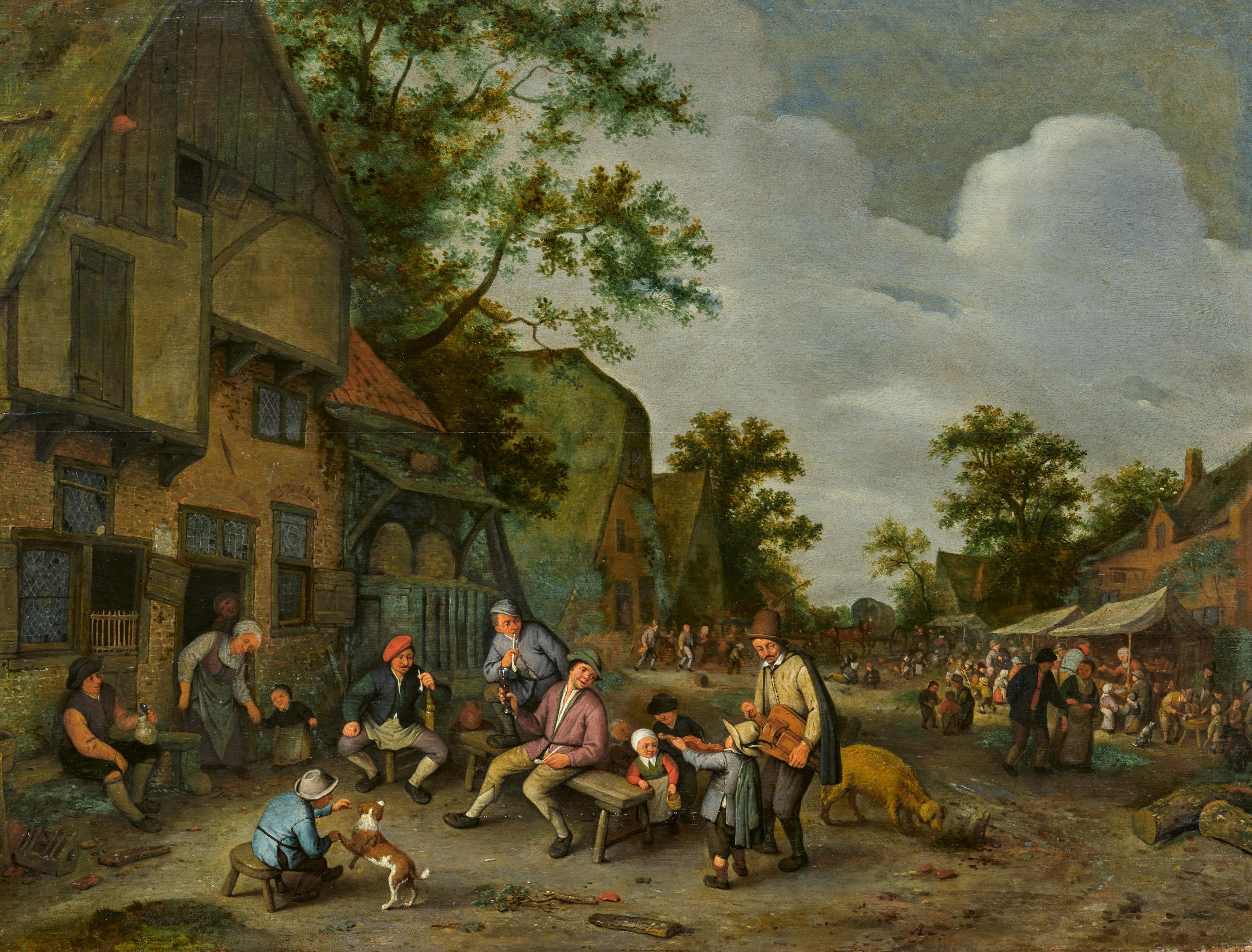DUSART, CORNELIS
Haarlem 1660 - 1704
Title: Village Festival.
Date: Ca 1690.
Technique: Oil on wood.
Mounting: Parquetted.
Measurement: 49.5 x 64.7cm.
Notation: Signed lower left: "Cor dusart".
Frame: Framed.
The present work is listed and documented in the online database of the RKD, The Hague, under ill. no. 7581.
Hardly legible, handwritten label on the verso.
Provenance:
Private ownership, Germany;
Auction Christie's New York, 16th January, 1992, lot 28;
Art dealer David Koetser, New York/Zurich, 1975;
Auction Notariushuis, Rotterdam, 07 - 11th March, 1974, lot (?);
Collection B. Mynter (according to the label on the reverse).
Cheerful hustle on a village square with market stalls and playing children forms the background for a scene that takes place in the foreground in the left half of the picture: In front of a house, four men have made themselves comfortable on benches and stools. They are smoking a pipe and having a drink. It is a day of rest. A few children are there, a boy is trying to train a dog, a woman and a little girl have probably just stepped out of the house and a man is peering curiously out of the open doorway. They all turn their attention to two musicians: a hurdy-gurdy player looking out of the picture at the viewer but above all to a little boy playing the violin. The adult musician's posture and gaze suggest that he is used to his companion earning everyone's admiration. Is the woolly pig snuffling behind the man on the floor an allusion to the quality of the performance? Or is it just a decoration for the rural ambience, like some pieces of wood and a branch lying in the foreground or the broken birdhouse on the left edge of the picture? On closer inspection, the house in the foreground also shows some repairs and a need for further repairs. Even when dressed in festive clothes and in a celebratory mood, the company shown remains rustic.
Cornelis Dusart, the master who created this painting, learnt from one of the most important painters of the peasant genre, Adriaen van Ostade (1610-1685). He was his pupil in Haarlem from around 1675 to 1679, after which he joined the St Luke's Guild there as an independent master. Dusart's work is strongly modelled on that of his teacher; in addition to his own pictorial creations, he painted free variants of his teacher's paintings from the rural milieu or occasionally also faithful copies. One such exact repetition of an Adriaen van Ostade painting (last auctioned by Christie's, London, 2nd December, 2007, lot 14) is the present work.
When Adriaen van Ostade died in 1685, Cornelis Dusart, who was also an art dealer, took over the inventory of his master's studio with many drawings and unfinished works. The RKD dates the present work to around 1690, while Bernhard Schnackenburg (according to the Christie's catalogue) assumes the years shortly after 1670 for van Ostade's original work. In this later period, van Ostade's depictions of peasants are less caricatured and more dignified than is the case in earlier works.
Dusart follows the original painting down to the last detail, but his palette is probably somewhat more radiant and details also appear a little more graphic.
Cornelis Dusart is regarded as the last great master of the peasant genre in the Haarlem art centre, who pays homage to his teacher in this work.



